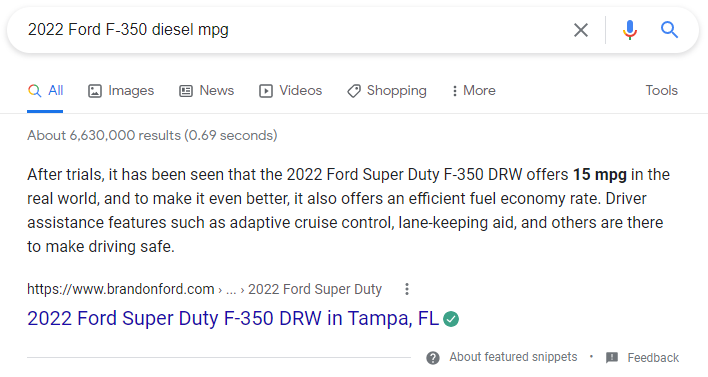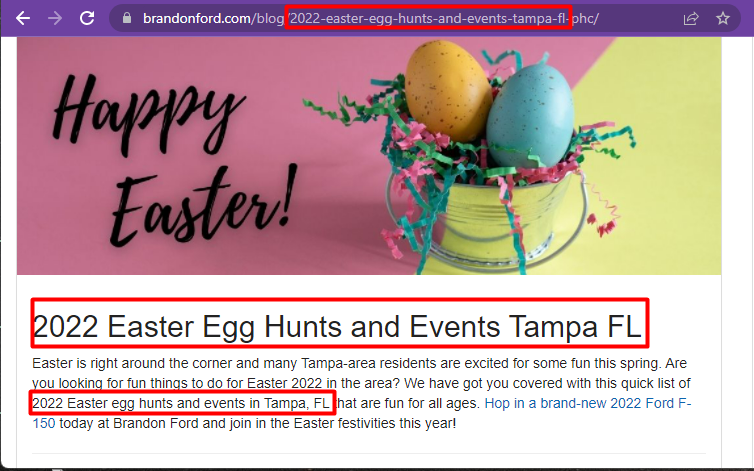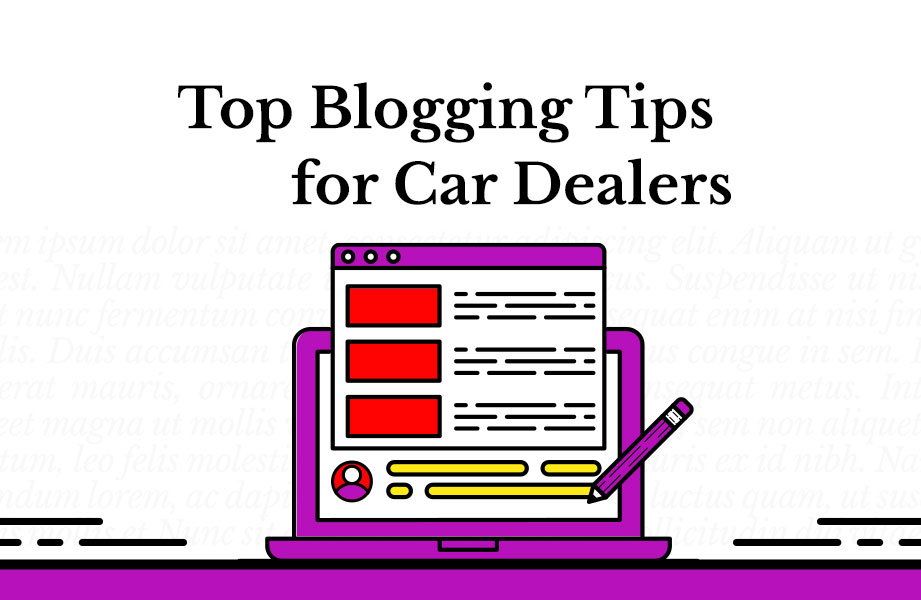If you’re here, you likely represent a dealership, and that dealership almost assuredly has a website. These days without a website even used car dealerships will lose traction and lose sales. What about your blog though? Most website providers offer blog functionality, should you be using it? Should you perhaps be doing it yourself even? At Phantom Copy—we’ll tell you more about ourselves later—we firmly believe that every dealership should have a blog. If you want to get started on a blog yourself, then you’ll be interested in our top blogging tips for car dealers.
Why Should a Dealership Have a Blog?
It’s a valid question. Why should you invest time or even money into something without knowing what good it will do? Blogs are a great place to house a lot of content, and that content can drive traffic. A lot of it. With regular blog posting, the right content, and enough time, you might even find that some of your blog posts outrank your homepage.
The other beautiful thing about a piece of content is that it’s a one-time cost to write and publish, but it can keep working for you for months and years to come. Where it differs from a pay-per-click strategy is that PPC will get you clicks now, but blogs and content, in general, can take time to gain traction but that traffic will continue long after the blog post is live. They both have a place in a successful marketing strategy.
Is All Traffic Good Traffic?
Any traffic that comes from blog posts that are relevant to your brand and where you do business IS good traffic. All sites have something called Domain Authority, and though this isn’t a Google term—as Google rarely shares insights into how its algorithm works—it represents how often pages on your website rank above other pages. Sites that generate more traffic, tend to get higher domain authority over time, and when you have higher domain authority, you’ll show up more often in searches. It’s a beautiful feedback loop, and it means that even ranking nationally for a topic like 2022 Ford F-350 diesel mpg, will help you rank when someone is searching for the new Ford Bronco near them even though the two searches are only marginally related.

With that said, you can adopt a more honed strategy. You certainly don’t want to blog about anything and everything that you think will rank, but the nice thing about blogging is that you can pick and choose what types of content you want to drive traffic for.
How to Get More Used Inventory at Your Dealership
What Should a Car Dealer Blog About?
Now, we do not condone using your dealership’s blog as a personal blog. That’s where blogging got its start, and it’s a reputation that is still tied to blogging. However, unless you already have a huge personal following, blogs about your vacation and what you had for breakfast aren’t going to rank. If it’s not ranking, then why are you doing it? In short, don’t treat your dealership’s blog like a journal or a social media platform.
There are three things that your dealership’s blog should focus on:
- Cars—This one is obvious, but it’s often the one that will generate the most national traffic. To put it simply, write about the cars you sell. Write about features, options, trim levels, and performance. Compare commonly cross-shopped models and announce new models. This is the bread and butter for most automotive blogs because this is what car shoppers across the country are searching for.
- Local—An example of a great local topic is Fourth of July Fireworks in your city. What does this have to do with selling cars you might ask. Nothing, but it’s about your community. It’s true that most people searching for this type of topic aren’t in the market for a car, but they ARE in your market. This keeps your brand at the forefront of their mind while giving you a local traffic boost.
- Dealership—Of course, your blog should be a place where you highlight what you are doing at the dealership. Sales events, awards, and more can all find a place on your blog. These pieces may not rank well on their own, but they are perfect for sharing on social and linking to the rest of your blog strategy.
What Makes a Good Keyword for Car Dealers?
Keyword is a misleading term. Nearly all keywords are more than one word, especially when you are trying to rank organically. For example “2022 Toyota bZ4x” is a keyword. However, this would be a very difficult keyword to rank for. You have to be more specific than that and try something like “2022 Toyota bZ4x color options.” Your goal is to pick a topic that people are going to search for but that you can also rank for.
Keep in mind, that for many of your keywords, you will be competing with other websites for positioning. Some of these websites could be car sites, OEM sites, or even other dealers. This means you will have to put a lot of thought and research into not only selecting your topic but in deciding how you will present that topic and provide your information in a better way then your competitors in the space.
How do You Optimize a Blog Post
Now that you have a topic you have to get to the writing. One of the greatest errors you can make is to have a blog that doesn’t speak to your keyword. For example, a blog with the keyword of “What is the 2024 Chevy Equinox EV” that spends most of it’s time talking about the current non-electric Equinox models is not going to do well.
You’ll need at least a few hundred words to ensure that you are an authority on the topic, but while you are writing, you’ll also want to think about how your blog will be laid out. You have to write with the end product in mind.
Best Practices for Blog Layout and Design
Every blog has a heading, and that heading should be your primary keyword. Really, you want your blog to speak to your keyword in multiple places including in your URL and early on in your text. This heading is most commonly an H1 and is usually the largest sized font on the page. As you go up in heading number (i.e. H2, H3, H4, etc.) the text gets smaller.

You should use H2s, H3s, and even H4s to break up your text every couple of paragraphs—as we have done through this blog—but don’t do it randomly or haphazardly. Instead, use them to denote a shift in topic. A page should only have one H1 typically. Beyond that, use your other headings to get more granular with H2s being your big topics, H3s being subtopics, etc.
Other Media to Include in Your Blog
You have heading and subheadings, and it all flows well together, but there’s still more to do. At the very least, you will also want to include atleast one image if not more, but keep them smaller than 200kb to avoid damaging your page speed. Images are a great way to break up content, but they also keep readers engaged and you can even rank for your images alone. Be sure to only use images that you have a right to use.
In addition to any images you have, you should also include links. Link to relevant inventory, link to landing pages, link to blog posts, and you can even link to other websites as well. Don’t use too many links, but a few links are always a good idea as they can not only drive traffic to other pages but can also show Google how pages are related and again increase domain authority.
There’s much more you can include too including videos (YouTube embeds usually work great), lists, tables, social embeds, and more. As you are adding stuff and playing around, just be sure that your blog still looks good and is properly formatted for all screen sizes.
How do You Track and Measure Blog Success
The most common and easiest way to measure and track success is to simply look at the traffic those blog posts are getting through a tool like Google Analytics. Some website providers in the dealership space will even have their own tools that you can use to track traffic.
You can get narrower than that and focus specifically on organic traffic or local traffic. You could also measure form fills, click-throughs to SRPs or VDPs, and more. It’s good to have goals, as it will help give your blog direction and scope as you continue to build.

Before you start obsessing over metrics though, know that any organic marketing like a blogging strategy is going to take time to gain traction. Most will not see much traffic in the first month or even in a few months. With properly optimized blogs and keywords though, you will eventually see results.
Are You The Right Person To Handle Your Dealership’s Blog?
Here comes the big question though. Are you the right person for the job? Blogging is like driving a car, nearly anyone can do it, but only a few have the skills to race at the levels of NASCAR or F1. You’ll have to post often, at least multiple times a month if you want to get traction. Writing a few hundred words, sourcing images, editing images, selecting links, uploading, that all takes time, not to mention the research you put into your keyword in the first place which can often take even longer than everything else combined.
The writer network at Phantom Copy has the skills to handle your blog for you. We have industry veterans that know how to get results. We can work on a recurring or even an à la carte basis. Additionally, we have an entire marketplace where you can browse and purchase already written automotive content. Find your Phantom today and let us start blogging for you!
